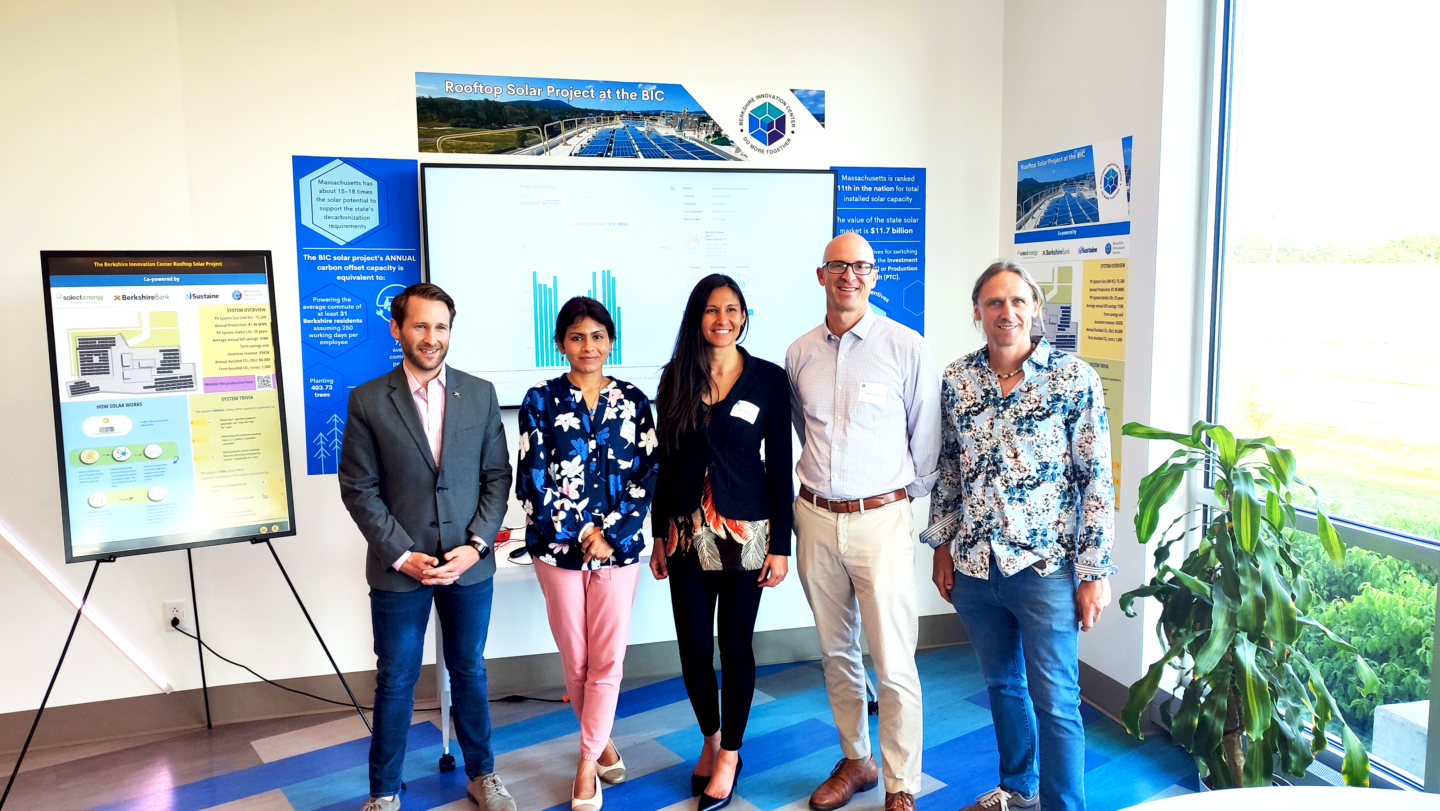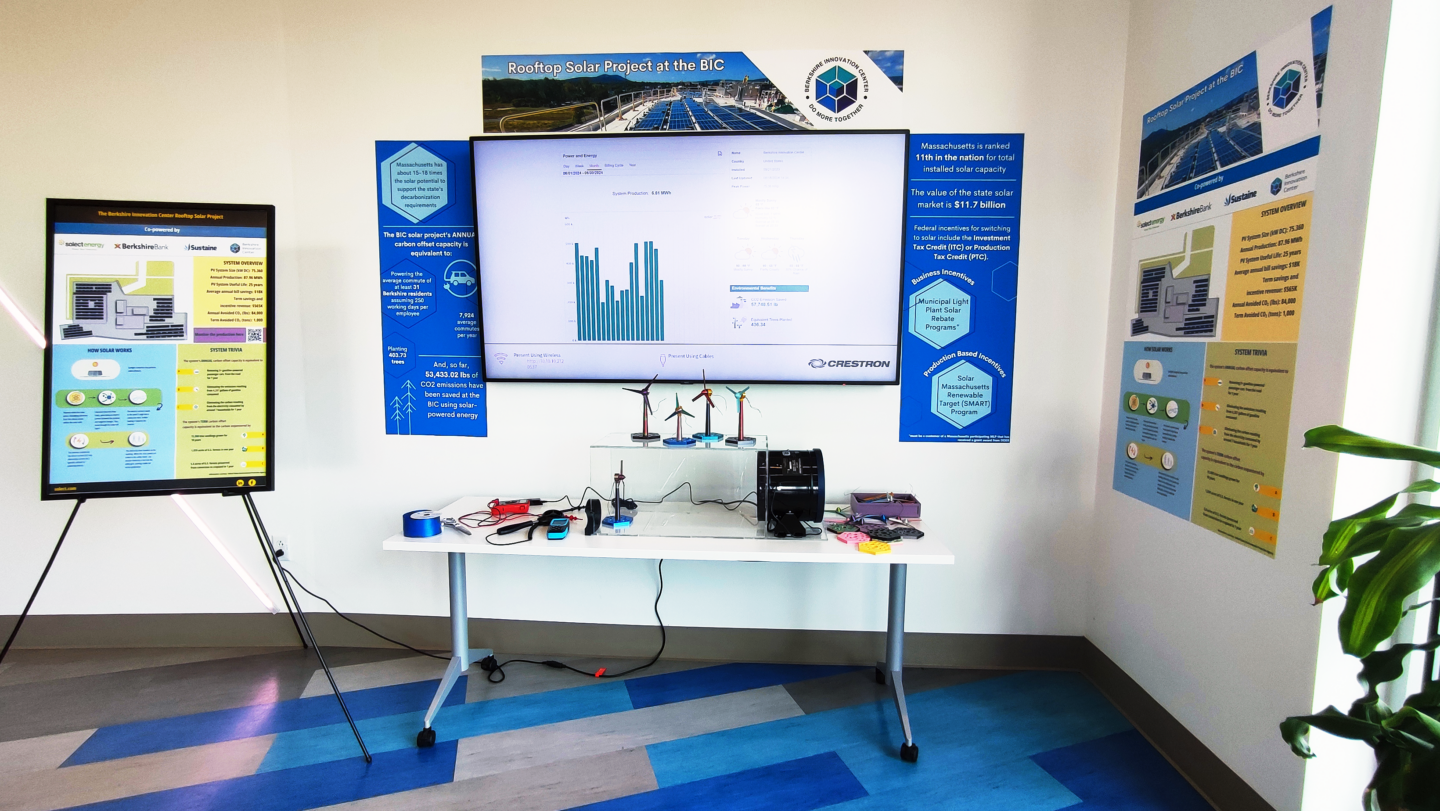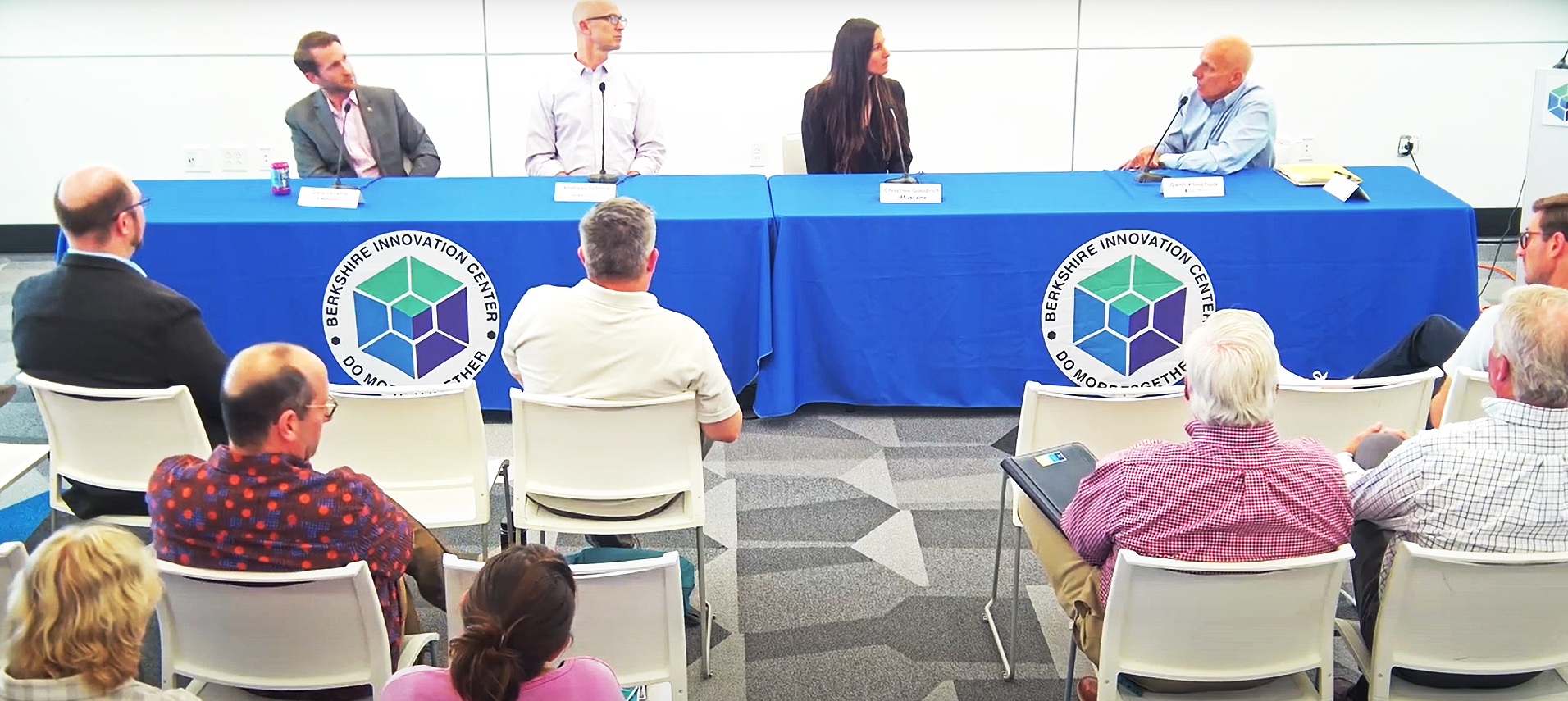The Global Interdisciplinary Green Cities Conference, held at the Berkshire Innovation Center (BIC) in Pittsfield from June 18th to 24th, convened experts and thought leaders from diverse fields, including Business, Engineering, Art, Architecture, Design, Political Science, International Relations, and Applied Science & Technology to explore recent developments, address pressing issues, and propose solutions to foster sustainable urban development.
The first day of the conference featured enriching panel discussions, including one on “New Incentives for Renewable Energy Projects: Opportunities & Continuing Challenges.” This panel showcased key figures from Solect Energy, Sustaine, Berkshire Bank, and NorthRenew Energy.
The 76 kW rooftop solar project recently installed on BIC is a prime example of collaborative, sustainable development resulting from a significant partnership between BIC, Solect Energy (solar developer and installer), Berkshire Bank (lender), and Sustaine (energy consultant). The Inflation Reduction Act’s direct pay provision for tax-exempt nonprofit organizations catalyzed this project’s implementation and success. Complementing this, Berkshire Bank’s sustainability bonds played a pivotal role in achieving this milestone.
Sustaine spearheaded a competitive RFP process, which led to the selection of Solect Energy as the solar developer. The Green Cities Conference was an ideal forum for team Solect to revisit the project, offering insights into its background, and addressing current challenges in the development of renewable energy projects across the region and beyond.

The following Q&A provides an overview of the key points discussed:
Q: What role did the IRA’s direct pay provision play in the materialization of the BIC solar project:
For the first time, tax-exempt organizations and public entities can receive direct payment for credits generated until 2032. This opportunity enabled the Berkshire Innovation Center to participate in the direct pay program and receive a cash payment (instead of a 30% tax credit) from the US Treasury.
Q: How is data transparency facilitating the interconnection feasibility analysis?
Utilities now update data portals monthly, as mandated by the Department of Public Utilities (DPU). It ensures timely access to circuit-specific insights such as circuit saturation, substation capacity, and information on application status. This transparency significantly aids developers in assessing interconnection feasibility. For example, in Pittsfield, some areas experience significant interconnection challenges, contrasting with less saturated areas like the location of the BIC project (a smaller-scale 76-kilowatt solar project).
Q: Are there expectations for improvements in the interconnection situation over the next decade?
The state and utilities are actively investing in enhancing interconnection capacity to meet increasing demands from sectors like data centers and electric vehicle charging stations. For instance, a single car can draw up to 300 kilowatts when plugged into a level-III charger. Mathematically, 3 cars being charged simultaneously can consume up to 1 MW of electricity, equivalent to the energy produced by 4 acres of solar panels at peak output on a sunny day. Massachusetts is committed to upgrading its grid infrastructure to support the anticipated growth in renewable energy capacity in the years to come.
Q: What is distributed generation (DG) and its role in the energy transition?
Distributed generation (DG) refers to small-scale renewable energy projects (such as rooftop or ground-mounted solar installations, usually under 5MW in size) with the energy primarily consumed on-site or within a utility’s distribution network, rather than being transmitted long distances via high-voltage transmission lines. It plays a crucial role in enhancing grid resilience and localized energy generation.

Q: How can businesses be encouraged to adopt more DG projects?
Despite incentives like the Federal Investment Tax Credit revived and enhanced by the Inflation Reduction Act (IRA), businesses have persistent awareness and knowledge gaps regarding the benefits and feasibility of DG projects in New England, which should be proactively addressed across diverse sectors.
Q: What barriers remain for small to medium-sized enterprises (SMEs) in adopting renewable energy solutions?
SMEs often face hurdles such as upfront costs, perceived complexities, and a lack of awareness about the financial and environmental benefits of renewable energy solutions. Overcoming these barriers requires targeted educational efforts and financial support tailored to SME needs.
Q: What challenges have emerged regarding the procurement of long lead-time items like transformers and breakers?
Procuring large equipment such as transformers now entails significant delays, extending up to four years. Five years ago, these items could be secured within 18 months, whereas today, major and minor equipment often require up to 4 years for procurement. Additionally, certain critical items like battery systems and high-capacity transformers (for multi-megawatt systems) are taking a year or more to be acquired.
Q: How does Solect respond to these challenges?
To mitigate these issues, team Solect has adopted a proactive approach. We place orders for equipment even before contracts are finalized to navigate the longer lead times more efficiently.
Q: What role has the USDA Rural Energy for America Program (REAP) played in fostering wider renewable energy adoption?
The USDA REAP grant, which covers up to 50% of project costs for small businesses in rural areas, is available to private, for-profit business entities that meet the Small Business Administration size standards in accordance with 13 CFR 121. This grant provides a valuable financial incentive despite potentially higher interest rates in the current market.
Q: How has COVID-19 affected the supply chain for renewable energy projects? Are there other factors currently causing delays?
While COVID-19 was initially the main driving factor behind supply chain disruptions, current delays are more affected by other issues. These include:
- Shipping difficulties, such as blockages in the Gulf of Saudi Arabia
- Increased fuel costs, which affect overall expenses
- The influx of money into the renewable energy industry due to the Inflation Reduction Act (IRA), which has driven up costs as more players compete for the same resources
- Increased demand for land, driving up lease costs
- Reliance on components from countries with complex relationships with the US
Q: How has the Inflation Reduction Act (IRA) impacted the renewable energy industry?
The IRA has had both positive and negative effects:
- It’s brought a lot of money into the industry, which is great
- However, this influx of capital has also contributed to greater demand and rising costs across the supply chain in some cases
- Land costs have increased dramatically for the development of utility-scale projects (e.g., from $500 to $10,000 for lease agreements)
- Competition for prime locations has intensified in the utility-scale sector
- There’s often a lag between project approval and completion, especially for larger developments like utility-scale or community-shared solar projects
To explore further, reach out to the Solect Energy team today.
Write to us at info@solect.com, call us at 855-800-4211, or send your questions through our ‘contact us’ page.
Find out how much you can save or earn by going solar.
July 1, 2024

